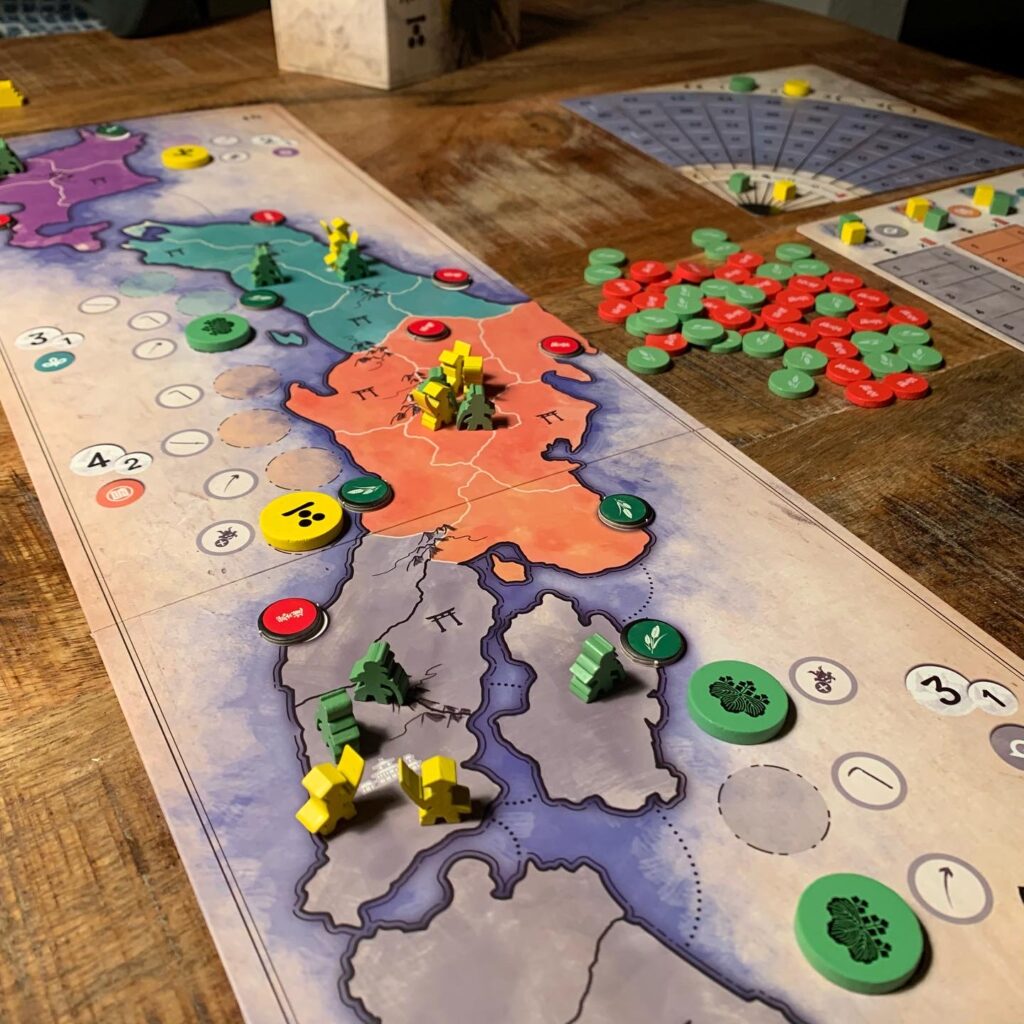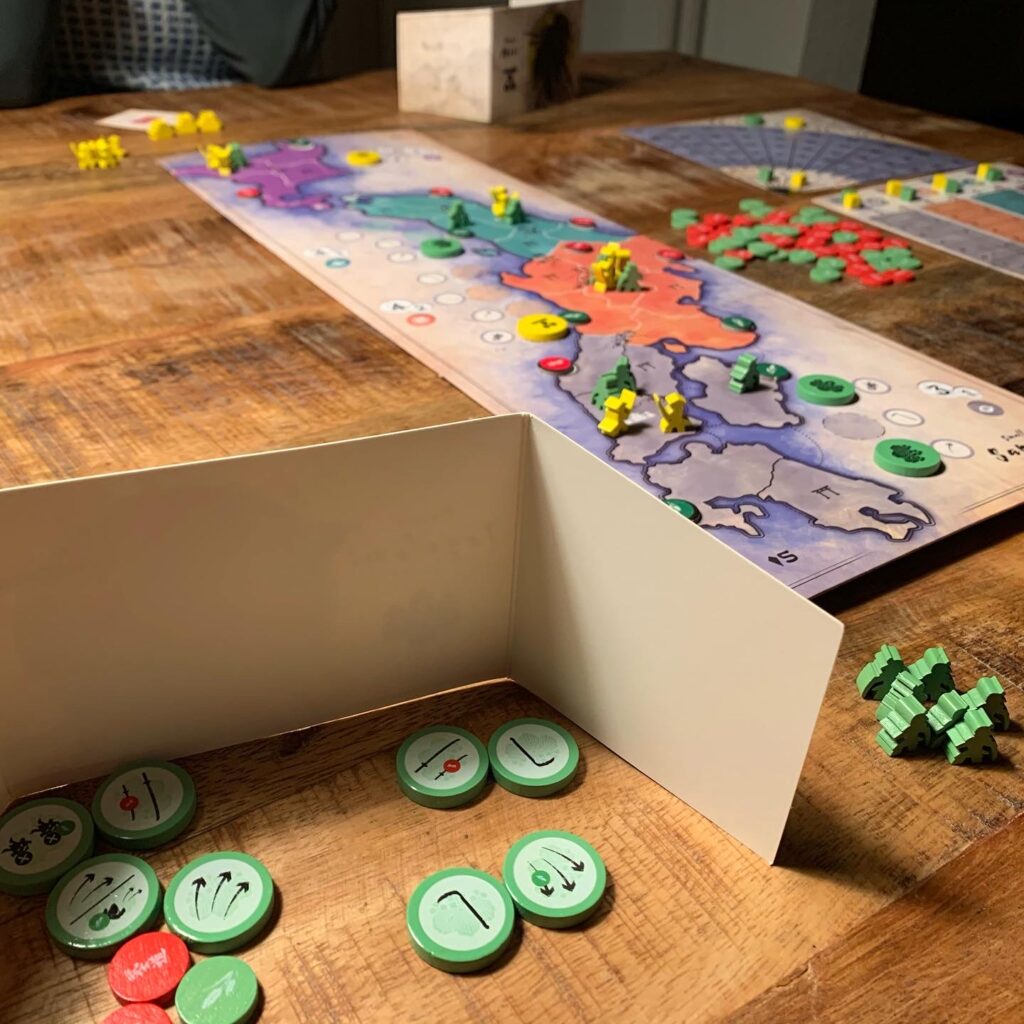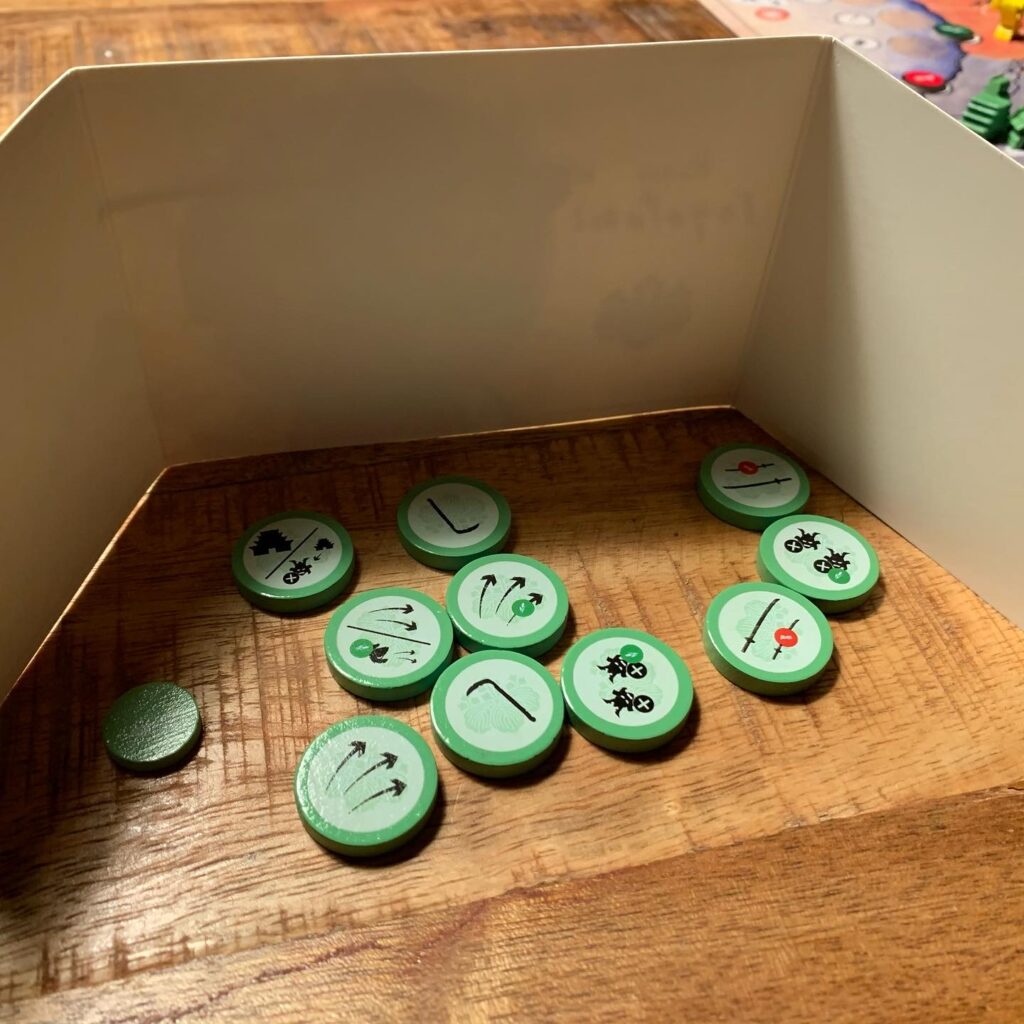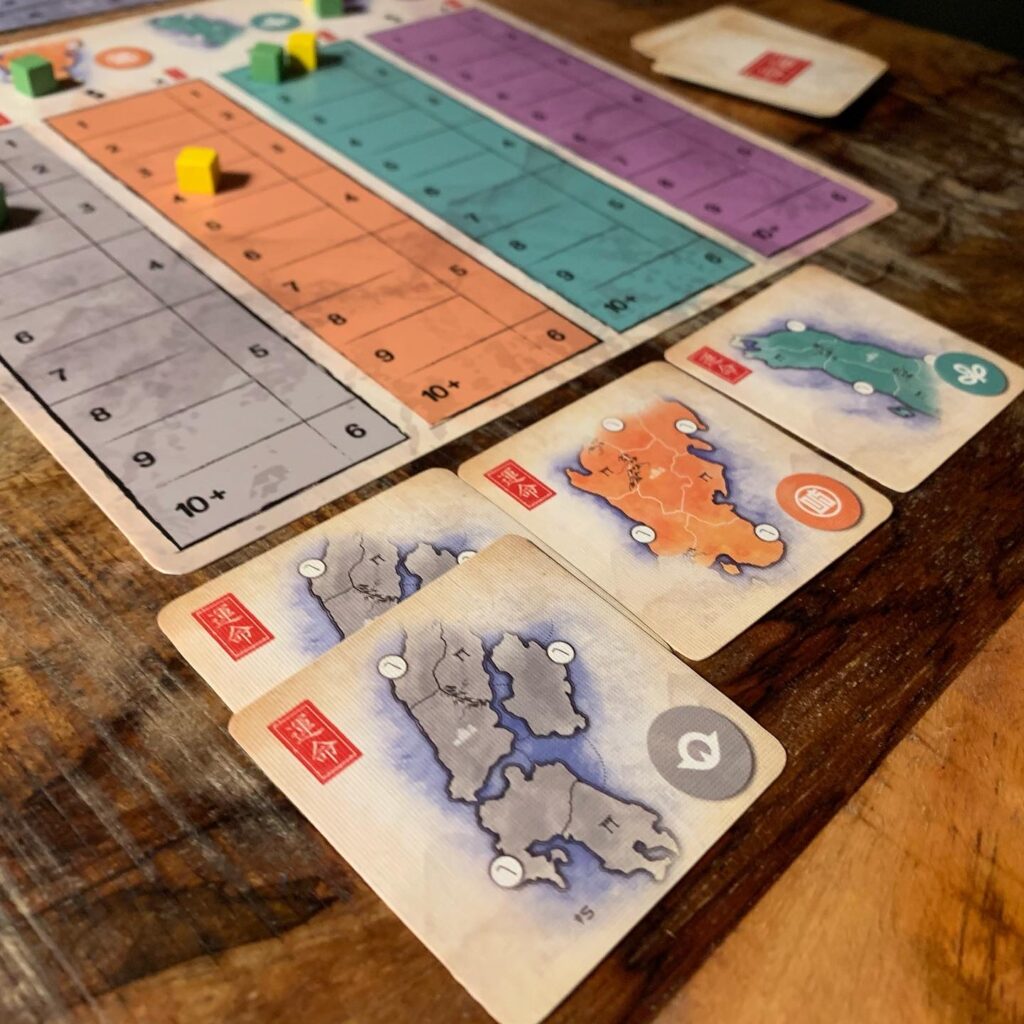NL “Omae wa mou shindeiru” is Japans voor je “bent allang dood” en de lijfspreuk van het hoofdpersonage van de populaire Japanse anime Fist of the North Star en befaamd internet meme. Overigens heb ik de anime nog nooit gezien, maar deze legendarische uitspraak komt er op neer dat voor je er erg in hebt, je allang geslacht bent. Mijn eerste potje Small Samurai Empires (SSE) voelde ook zo aan. Voor dat ik er erg in had, verloor ik met een forse achterstand. Ben jij de Japanse veldheer en is het Ninjaan met die banaan is het samurauit met de pret en kun je beter sepukku plegen?

Small Samurai Empires is een klassiek landjepik, denk aan Risk, maar dan met een twist. Een twisk? In Small Samurai Empires verdien je dan ook punten voor jouw macht in de verschillende provincies en regio’s van Japan. Hoe meer invloed je vergaart, hoe meer punten je verdiend.

In Small Samurai Empires moet jij jouw zetten “programmeren”. Dat gaat als volgt: het spel bestaat uit 3 tijdperken. Elk tijdperk bestaat uit 2 rondes en tijdens iedere ronden plaatsen spelers een aantal actiefiches gesloten op de beschikbare velden op het spelbord. Bij elke locatie hoort een neutrale actie die je gelijk met het plaatsen van een fiche uitvoert. Vervolgens worden alle fiches afgehandeld van beneden naar boven. In ronde twee van een tijdperk blijven de gebruikte en afgehandelde fiches liggen. In ronde twee gaan spelers weer gedekte actiefiches plaatsen. Hun eigen fiches kunnen ze gratis afdekken, maar als je fiches van een tegenstander wilt afdekken, moet je grondstoffen betalen. Wederom verricht je bij het plaatsen van een fiche een zogeheten neutrale actie. Door het voorgaande komen er fiches bij op het speelbord en vallen er ook fiches weg. Wederom worden nu in volgorde de actiefiches afgehandeld, maar nu van boven naar beneden.

We schrijven hierboven over actiefiches en neutrale acties, maar welke acties kan een speler eigenlijk verrichten? Acties komen neer op het volgende:
1. verplaatsen van je legers;
2. plaatsen van nieuwe legers;
3. plaatsen van ene kasteel;
4. verzamelen van grondstoffen in gebieden waar jij de meeste macht hebt.

Dit spelmechanisme voelt in combinatie met het landjepikken erg innovatief aan, maar levert ook veel (leuke) keuzestress op. Je probeert namelijk de juiste combinaties te maken en probeert op de juiste momenten de juiste actie verrichten. Dat maakt Small Samurai Empires in mijn ogen een origineel spel. Daarna is de productie echt top. Elke speler heeft unieke meeples! De symboliek is helder en daardoor is het spel snel uit te leggen. Easy to learn. Hard to master. En dat heb ik gemerkt. Immens verlies, maar gelukkig herpak je daarna weer snel en wil je nog een potje spelen. “It’s ok to lose to opponent. It’s never okay to lose to fear” zoals Mr. Miyagi ooit zei.

EN “Omae wa mou shindeiru” is Japanese for “you are already dead” and the motto of the main character of the popular Japanese anime Fist of the North Star and famous internet meme. By the way, I have never seen the anime, but this legendary saying means that before you know it, you have been slaughtered. My first game of Small Samurai Empires (SSE) felt like this. Before I knew it, I was losing by a considerable margin. Are you the better Japanese warlord and is victory a Ninyasss or is it Samurout with the fun and would you be better of committing sepukku?

Small Samurai Empires is a classic dudes on a map game, think Risk, but with a twist. A twisk? In Small Samurai Empires, you earn points for your power in the various provinces and regions of Japan. The more influence you have, the more points you earn.

In Small Samurai Empires, you have to “program” your moves. The game consists of three eras. Each era consists of 2 rounds and during each round, players place a number of action chits face down on the available fields on the game board. Each location is accompanied by a neutral action that is carried out at the same time as placing an action marker. Then, all the chits are dealt with from the bottom to the top. In round two of an era, the used and dealt chits remain. In round two, players place covered action chips again. They can cover their own chips for free, but if they want to cover an opponent’s chips, they have to pay resources. Again, when placing a tile, the player performs a so-called neutral action. As a result of the above, chits are added to the board and removed from it. Again, the action tiles are placed in order, but now from top to bottom.
We mentioned above about action tiles and neutral actions, but which actions can a player perform? Actions come down to the following:
- move your armies;
- placing new armies;
- place a castle;
- collect resources in areas where you have the most power.
This gameplay mechanism, in combination with conquering and placing dudes on a map, feels very innovative, but also provides a lot of (fun) choice stress. You try to make the right combinations and try to perform the right actions at the right moments. That makes Small Samurai Empires an original game in my opinion. After that, the production is really top-notch. Each player has unique meeples! The symbolism is clear and therefore the game is easy to explain. Easy to learn. Hard to master. And that is what I noticed. You lose a lot, but fortunately you recover quickly and want to play another game. “It’s ok to lose to opponent. It’s never okay to lose to fear” as Mr. Miyagi once said.



